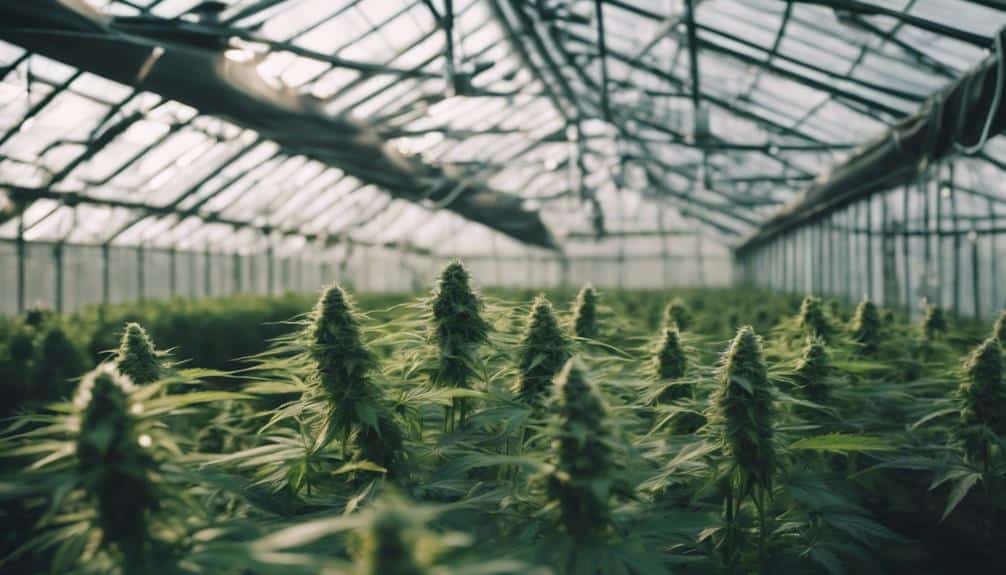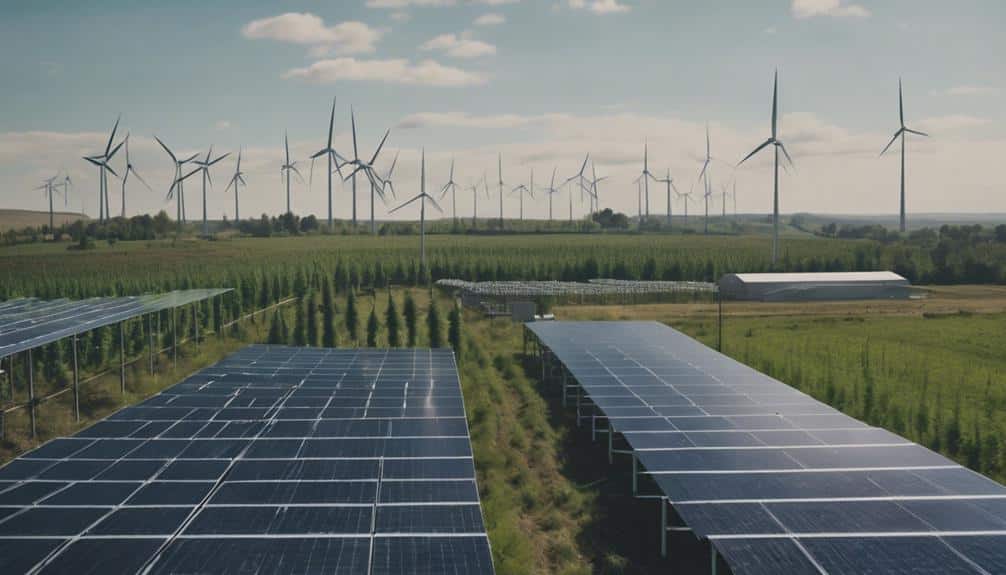Could the cannabis industry, often criticized for its environmental impact, actually be a catalyst for sustainable practices?
Table of Contents
Surprisingly, several companies in this sector are pioneering eco-friendly cultivation methods, innovative packaging solutions, and waste management strategies that set new standards for sustainability.
But what’s driving this green revolution? Could it spark significant changes across other industries too?
Let’s delve deeper to find out.
The Cannabis Industry’s Push Towards Sustainability

In an effort to reduce their environmental footprint, the cannabis industry is advocating more sustainable practices. They strive to balance the rapid growth of the sector with responsible stewardship of our planet’s resources. This burgeoning industry is making green investments, implementing eco-friendly processes and adopting eco branding to demonstrate their commitment to sustainability.
Green investments are a critical component of this push towards sustainability. Many cannabis companies are investing heavily in renewable energy and waste management systems. Their aim is to minimize carbon emissions and reduce the environmental impact of their operations. They’re also funding research and development to create more sustainable production methods, packaging, and products.
Eco branding is another strategy being employed by these companies. They leverage their sustainability efforts to appeal to environmentally-conscious consumers by promoting their commitment to reducing waste, conserving water, and using clean energy through their branding and marketing materials.
This push towards sustainability isn’t just about doing right by the planet; it’s also about survival. With increasing regulatory scrutiny and consumer demand for sustainable products, companies that fail to adopt sustainable practices risk being left behind. The cannabis industry’s push towards sustainability represents a conscious shift towards more sustainable business models, demonstrating a commitment to both profitability and the planet.
Sustainable Cannabis Cultivation Methods
Many cannabis cultivators are now adopting eco-friendly farming techniques to ensure a more sustainable future. These methods drastically reduce their environmental impact while maintaining the quality and yield of their crops. One key area they’re focusing on is water conservation. By implementing advanced irrigation systems, they’re able to significantly cut water usage. These systems utilize technology to carefully measure water needs, ensuring no drop is wasted.
Furthermore, they’re tackling the industry’s carbon footprint by switching to renewable energy sources such as solar or wind power. This reduction in reliance on fossil fuels directly contributes to a decrease in greenhouse gas emissions, thereby reducing the overall carbon footprint.
Moreover, some cultivators are embracing ‘closed-loop’ farming methods. By reusing waste products as nutrients for plants, they create a self-sustaining cycle that minimizes waste and maximizes efficiency.
These sustainable cultivation methods aren’t just about protecting the environment; they also set the standard for a responsible and sustainable cannabis industry. By embracing such practices, you contribute not only to your own success but also to a broader cause: a healthier, more sustainable future.
Eco-Friendly Packaging Innovations

The industry’s push towards sustainability doesn’t stop at cultivation; it also extends to packaging. Numerous innovative solutions are being introduced to reduce waste and environmental impact.
Consider, for instance, the rise of biodegradable containers. These aren’t your typical plastic jars; these are containers made from plant-based materials that can break down naturally and harmlessly in the environment. You’re not just keeping your cannabis products fresh; you’re also helping to reduce the mountains of plastic waste that burden our planet.
Equally impressive is the use of hemp-based packaging. The cannabis plant isn’t just good for creating the product—it’s also being used to package it. Hemp packaging is sturdy, versatile, and completely compostable. It’s also a fantastic way to further reduce your carbon footprint as hemp absorbs CO2 as it grows.
These eco-friendly packaging innovations aren’t just smart—they’re necessary. As the cannabis industry continues to grow, it’s vital that it does so sustainably. After all, serving others isn’t just about providing a product; it’s about protecting our shared home.
Cannabis Waste Management Solutions
Your commitment to sustainability can extend beyond packaging to how you handle cannabis waste—a crucial but often overlooked aspect of the industry’s environmental impact. As an industry participant, you’re responsible not only for the product you create but also for managing its waste efficiently. It’s crucial to understand waste legislation and adhere to it while exploring waste management systems that prioritize eco-friendly practices.
Cannabis waste presents biofuel potential—offering a responsible method to repurpose this by-product into renewable energy source which reduces greenhouse gas emissions.
Moreover, partnering with waste management companies specializing in organic waste can help navigate complex legislation and ensure compliance while finding solutions that turn waste into compost—an additional way to give back to the environment.
Cannabis’s Influence on Green Legislation

As you explore environmentally friendly practices in waste management, it’s also important to consider the role of cannabis in shaping green legislation. The legislative impacts of the cannabis industry on environmental policy are significant and far-reaching.
In states where cannabis is legal, new laws have been enacted that mandate sustainable cultivation practices. This signifies a major policy transformation, with lawmakers recognizing the need for greener, more sustainable ways of growing cannabis. These laws require growers to use renewable energy sources, limit water usage, and reduce carbon emissions—setting a precedent for other industries to follow.
Moreover, cannabis legalization itself has led to an unexpected benefit: the reduction of illegal grow operations which often harm the environment through deforestation and water pollution.
The influence of the cannabis industry doesn’t stop at cultivation practices. Legislation around waste management and product packaging is also changing—pushing for more biodegradable options and recycling programs.
Conclusion
In conclusion, by implementing eco-friendly cultivation methods, innovating in packaging, and managing waste efficiently—the cannabis industry is championing sustainable practices. Take Sana Packaging as an example; they’re using hemp-based plastic for sustainable packaging. This green revolution in cannabis isn’t just good for business; it’s essential for our planet.
As this industry continues to evolve, let’s hope other sectors take a leaf from their green book.
I invite you to further explore this exciting green revolution in the cannabis industry. Why not visit Doc Greenly at docgreenly.com or give them a call? They’re at the forefront of these sustainable practices and always happy to share their knowledge and expertise. It’s an invitation to become part of a movement that isn’t just changing industries but also making a significant contribution to our planet. Let’s explore this green journey together!

